Geranium maculatum has several common names: Wild geranium, spotted geranium, crane's-bill. It is a common woodland native herbaceous perennial plant that blooms in spring.
Flowers
The flowers are lavender-pink and about 1 to 1.5 inches wide. The 5 petals have radiating streaks which guide insects to the nectar. There are 5 hairy nectar glands between the bases of the petals.
There are 10 stamens in 2 whorls of 5. The anthers are yellow and turn brown with age. The 1 pistil is formed from 5 fused carpels. A carpel each has an ovary, a style and a stigma. So there are 5 of each.
The 5 sepals have non glandular hairs, and have spine-like tips.
Flower development (type Protandrous):
- In the first photo, the upper flower is in the male phase. Note some of the anthers are still yellow and the stigmas are not yet formed. The anthers then give off their pollen and wither and the flower proceeds to the female phase.
- The lower flower in the photo is in the female phase. Note the anthers are brown and 5 stigmas are developed and ready to accept pollen from another flower.
- This sequence is the plant's mechanism to limit self polination.
- Sometimes there is some overlap resulting in some self polination.
Sometimes there are plants with female only flowers. Its population is small. With both female and bisexual flowers, the plant is said to be gynodioecious
The second photo shows the sepals and hairs.
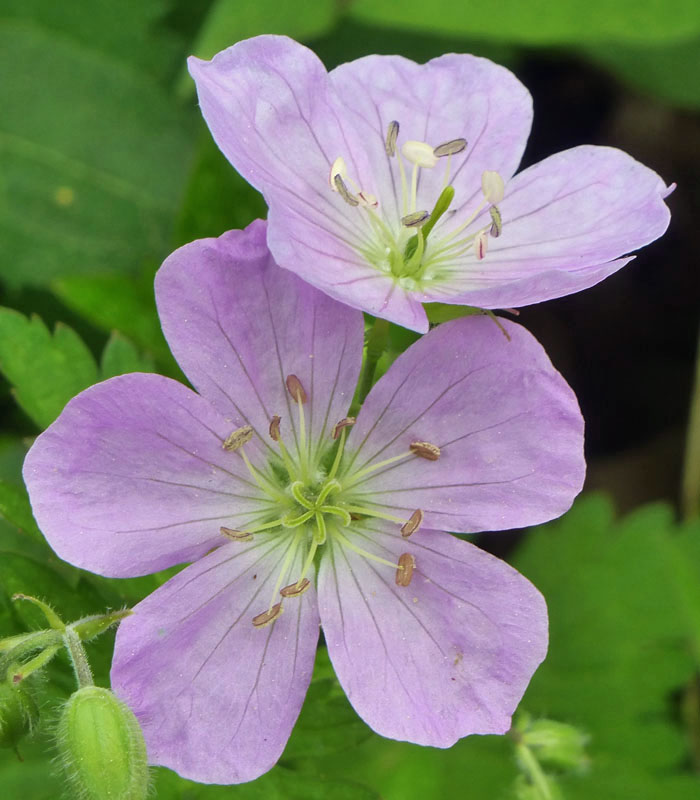
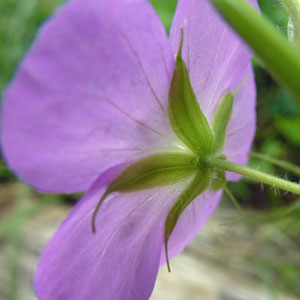
Fruit
The following photos show fruit formation and seed dispersal
- The first shows the lost of petals and stamen. The sepals are persistent. The pistil elongates into a pointed fruit ( like a crane's bill)
- The next photo shows the hardened structure. The 5 carpels, each with one ovule, give rise to 5 seeds at the base of the fruit.
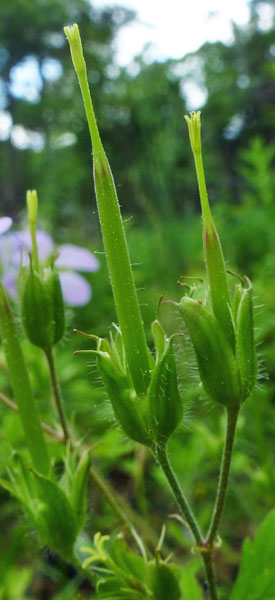
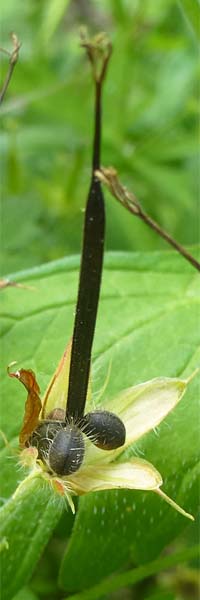
- The long columnar part is composed of 5 sections from the 5 carpel styles around a central column. When the fruit ripens, the sections separate at the base from the central column and rapidly curl up and outward hurling the seeds away from the plant. The first photo below shows the fruit just before dispersal. Photo credits go to Daniel L. Nickrent, PhytoImages, http://www.phytoimages.siu.edu .
- The second photo shows the fruit with the sections curled up and the seeds dispersed. The seed cups in the photo are all empty.
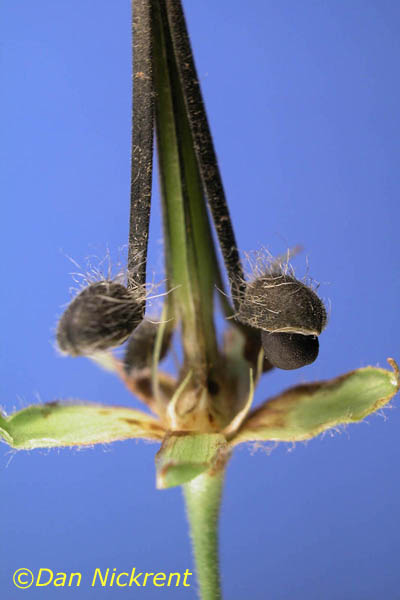
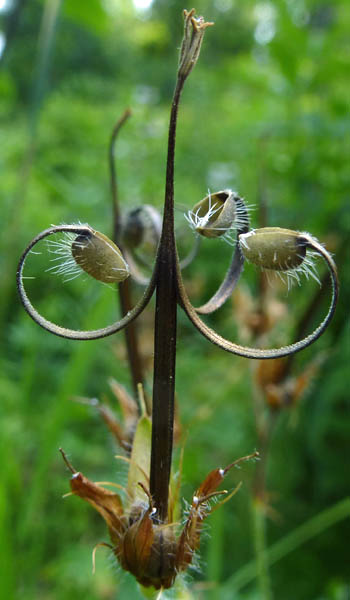
Leaves
The plant has many large basal leaves on long petioles (leaf stalks). The leaves are deeply cut with usually 5 main lobes.
Just below the flower on the flower stalk, there is a pair of smaller leaves with short petioles, cauline leaves. These leaves are similar in shape but usually with only 3 main lobes.

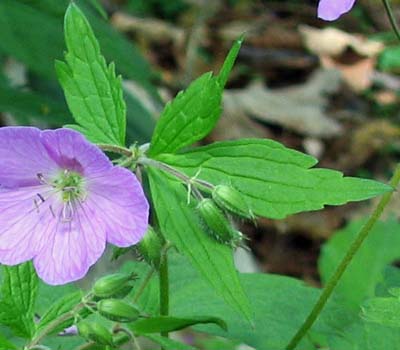
Plant and Habitat
The plant grows to be about 1 to 2 ft tall. It grows in woodland areas in semi-shade
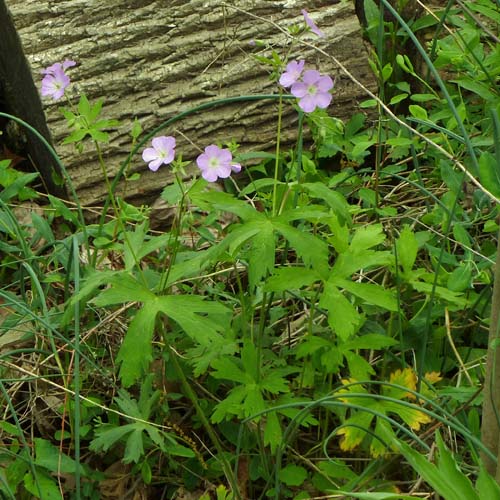
White Flowers
The white flowered form, Geranium maculatum forma albiflorum, is uncommon. This was seen in the Great Smoky Mountains.
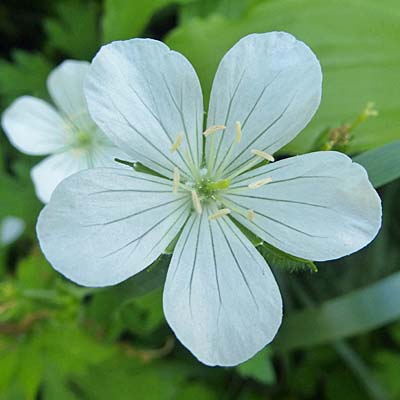
Unless otherwise stated, all photos by H & M Ling, mainly May for flowers and June for fruit, Somerset, NJ
Additional information
Additional online information / references:
The USDA website shows the distribution in the US and Canada: https://plants.usda.gov/core/profile?symbol=GEMA
Plant description:
https://www.minnesotawildflowers.info/flower/wild-geranium
https://www.missouriplants.com/Geranium_maculatum_page.html
http://www.arboretum.umn.edu/UserFiles/File/2014%20Earth%20Day/Heather%20Holm%20presentation%202.pdf